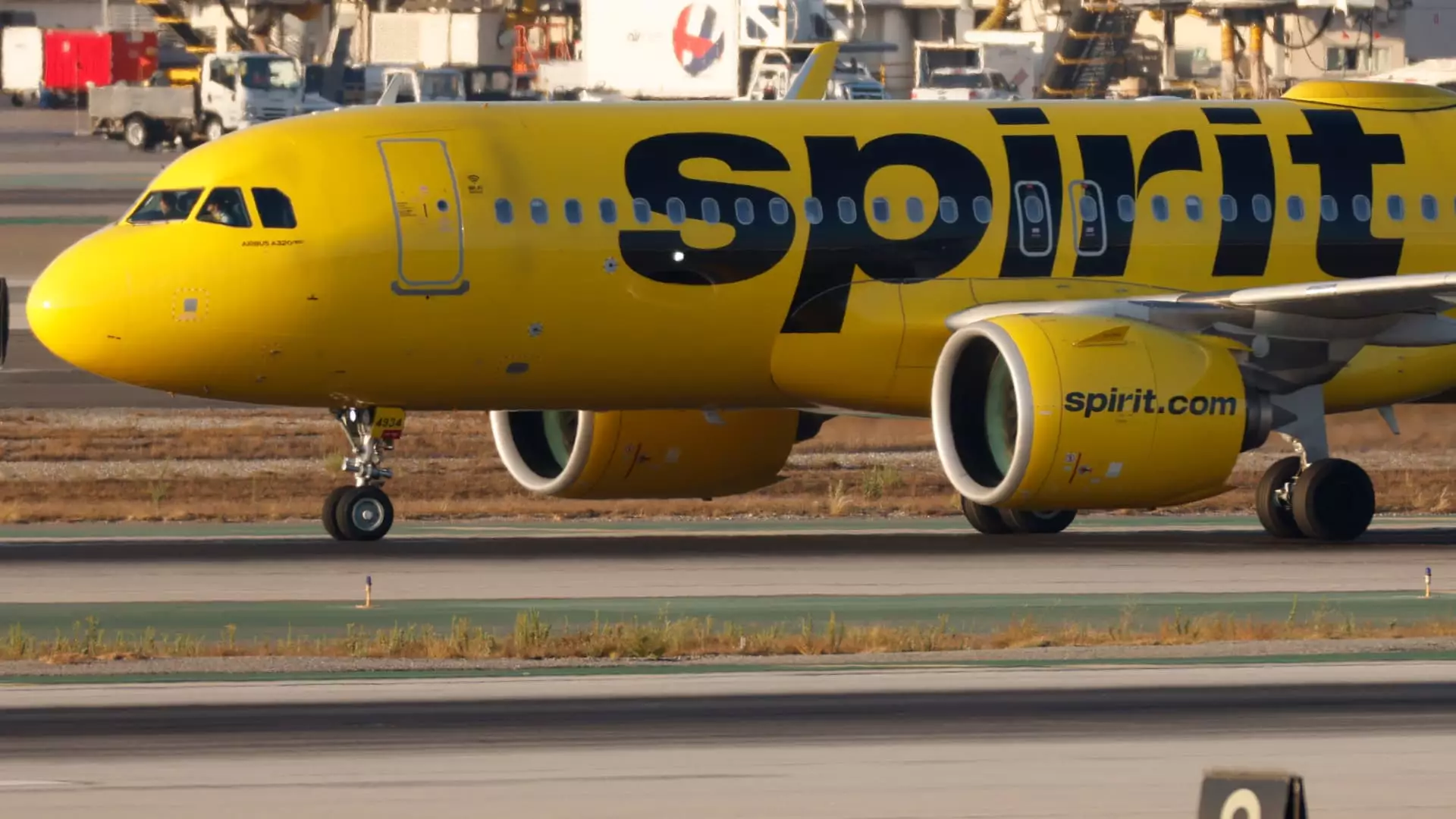At a time when many industries are grappling with an unpredictable landscape, Spirit Airlines stands out with a bold resurgence from bankruptcy, having successfully navigated a stormy period. As the company gears up for a new chapter, CEO Ted Christie’s optimism is palpable. His assertion that Spirit is leaner and better positioned to challenge established competitors, particularly Southwest Airlines, indicates a strategic shift that could disrupt the status quo. With recent bold moves like the introduction of checked bag fees by Southwest—once a differentiating factor for them in the airline market—Spirit appears ready to seize the moment.
Ready to Pounce on Market Opportunities
The sobering reality is that many travelers have long accepted the hidden costs associated with air travel, like checked bag fees and seat selection charges, a strategy Spirit pioneered. Christie’s belief that Southwest’s new charges will create “painful” shifts in customer preferences offers Spirit a unique opportunity to attract disenchanted loyalists from their rival. As the largest domestic airlines begin to mimic Spirit’s a la carte pricing model, one must ponder whether customers will finally recognize the cost-effective potential of the budget airline.
The competitive landscape is ripe for disruption; with Spirit now promising bundles inclusive of seat assignments and checked luggage, it presents an appealing alternative for the financially conscious traveler. Even small markets where competition is limited, such as Kansas City and Milwaukee, could see price-conscious consumers reevaluating their choices: a risky yet savvy maneuver that places Spirit Airlines front and center in a burgeoning battle.
Analyzing the New Normal in Airline Economics
The economics of air travel are shifting, and corporate strategies that may have once seemed sound are now open for scrutiny. For decades, Southwest Airlines thrived on its “two free checked bags” proposition. However, as they deviate from this model, consumers are left wondering: what else will change? The implications are enormous; travelers who previously turned to Southwest for value might find Spirit’s pricing and offerings far more attractive.
Sales tactics backed by data analytics could be crucial here. As customers explore platforms like Expedia, Spirit’s potentially lower ticket prices will likely catch the eye of travelers emboldened to explore alternatives. The competition within the domestic airline market may intensify as brands jostle for visibility and patronage, and this is precisely where Spirit’s strategic maneuvering could provide dividends.
A New Era of Brand Loyalty
The competitive dynamics suggest that brand loyalty may be evolving. Historically, Southwest was synonymous with customer-friendly practices, but as they pivot toward more traditional revenue models, consumers may not be as forgiving. Christie’s observation that an existing customer base is now “up for grabs” speaks volumes about the shifting paradigm in customer expectations and engagement.
Spirit’s tactical marketing could cultivate a new brand narrative: no-frills, transparent pricing without the mask of gimmicks. The combination of competitive pricing and enhanced customer service could redefine loyalty in a market where brands are increasingly interchangeable.
Facing Challenges with Formidable Resilience
Spirit’s post-bankruptcy journey hasn’t been without its hurdles. Struggling with significant net losses and a complex operational restructuring, an infusion of capital and a reduction in debt illustrate a commendable turnaround effort. Yet, acceptance in a saturated market requires innovation beyond mere financial stability.
The rejection of merger offers from competitors like Frontier Airlines implies a confidence in their distinct brand offering. Positioning itself as a stand-alone entity rather than consolidating risks could ultimately empower Spirit to carve a niche in an industry that has recently seen volatility in merger activities.
Looking Forward with Ambition
Overall, Spirit Airlines embodies the dynamic nature of market competition. As they attempt to deliver a fresh take on air travel pricing and customer service, it will be intriguing to observe how existing competitors react to this revival. Spirit’s ambition may very well redefine the norms of the airline industry, creating new benchmarks for both pricing and customer engagement in an economy still recovering from turbulence. With strategic acumen, adaptability, and a focus on revitalizing brand loyalty, Spirit Airlines seems poised not just to survive but to thrive in an evolving market landscape.

